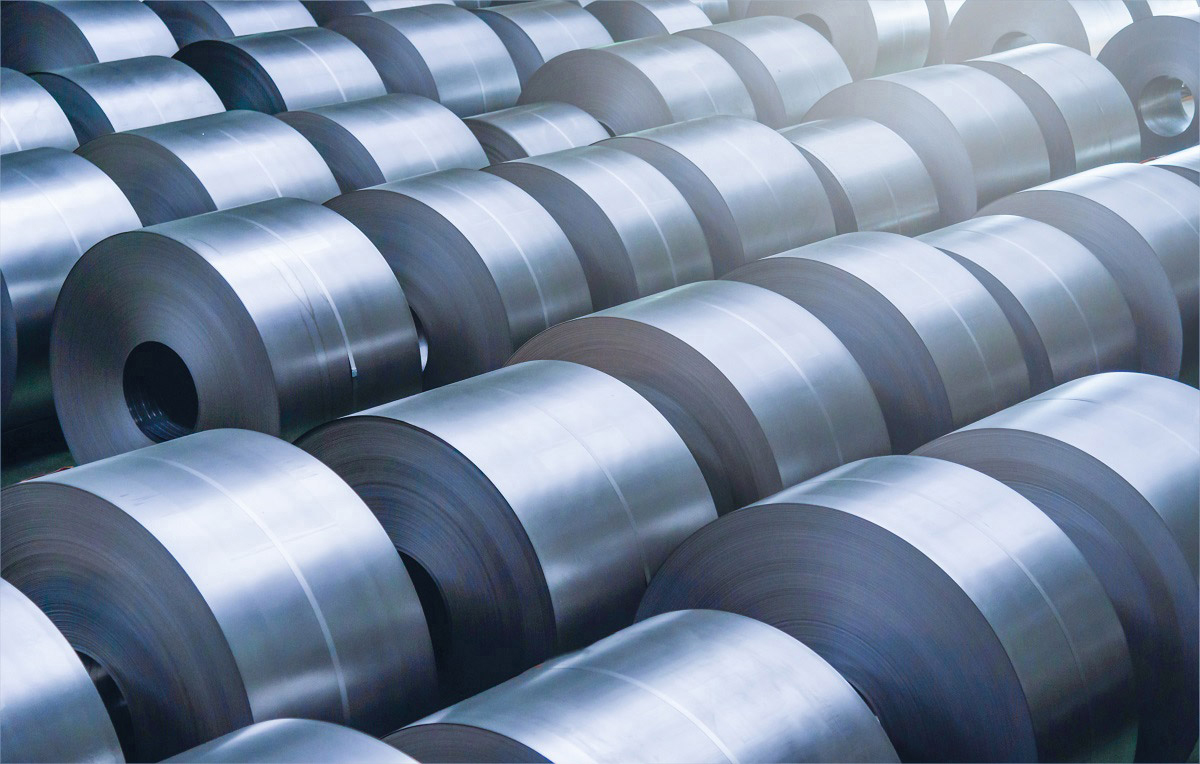
According to the World Steel Association, there are over 3,500 steel grades that each has its unique properties and uses. From building infrastructure to vehicles to appliances, steel can be used in endless real-world applications.
How steel is manufactured can have a significant impact on its products and applications. Even if the grades and specifications between multiple steel properties are the same, the manufacturing process can change the chemical composition of the steel.
The major difference in pre-fabricated steel composition products stems from hot-rolled and cold-rolled steel. We’ll delve into the differences below.
What Is Rolled Steel?
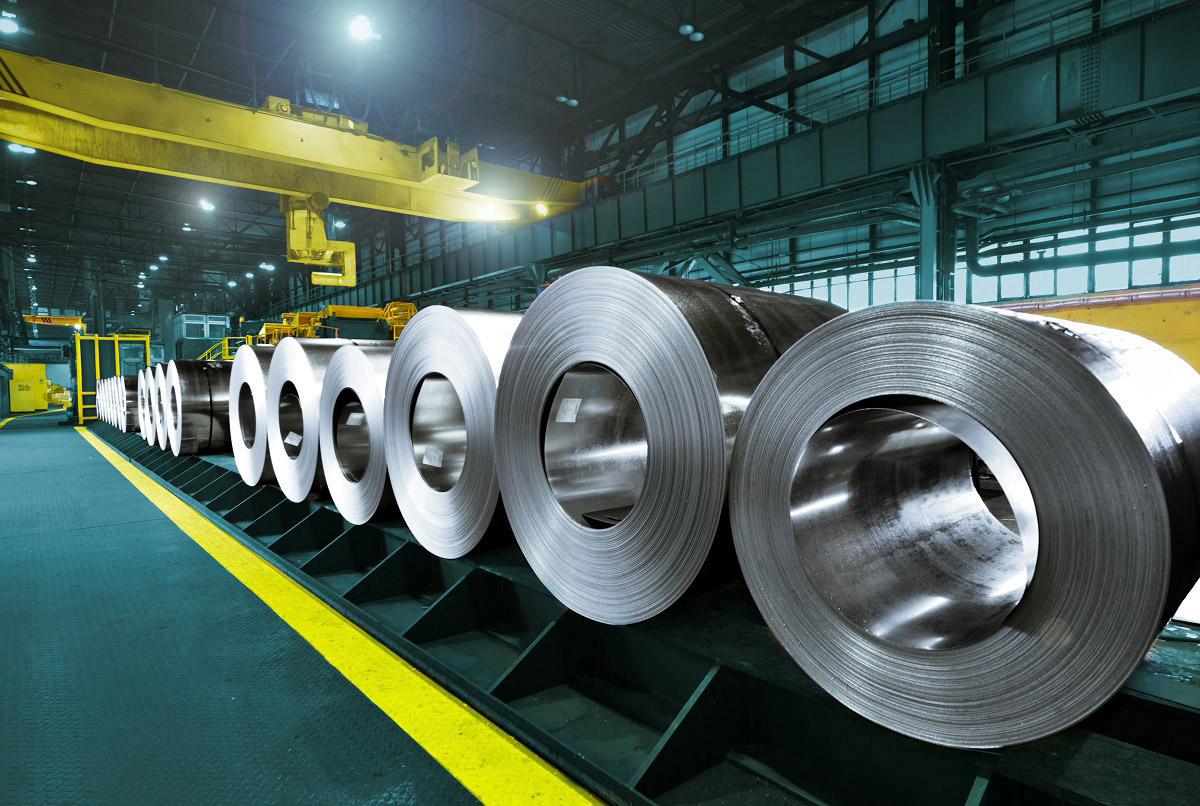
Rolling is an example of a metal-forming process that uses at least one pair of rolls to flatten out metal stock. This process is used to achieve a uniform thickness in the metal, to reduce the overall thickness, or to directly impact the mechanical property of the metal. The steel-rolling process is similar to rolling out dough to make it flatter or thinner.
A variety of rolling processes for metals exists, some of which include roll bending, roll forming, profile rolling, and controlled rolling.
Roll stands are grouped to make rolling mills that are beneficial in both processes to process metal into products such as channel stock, angle stock, l-beams, or other structural steel products.
The classification of hot-rolled or cold-rolled steel depends on the temperature of the metal while it is being rolled. In hot-rolled steel welding, the metal is heated to a temperature so high that it cannot be recrystallized. In cold-rolled steel welding, the temperature of the metal during the process is below the recrystallization temperature.
Knowing when and how to use both hot-rolled and cold-rolled steel can save you time and money, as you’ll know which materials you need to purchase. Both hot-rolled steel and cold-rolled steel have a variety of uses and applications, which we will explore further below.
What Is Hot-Rolled Steel?
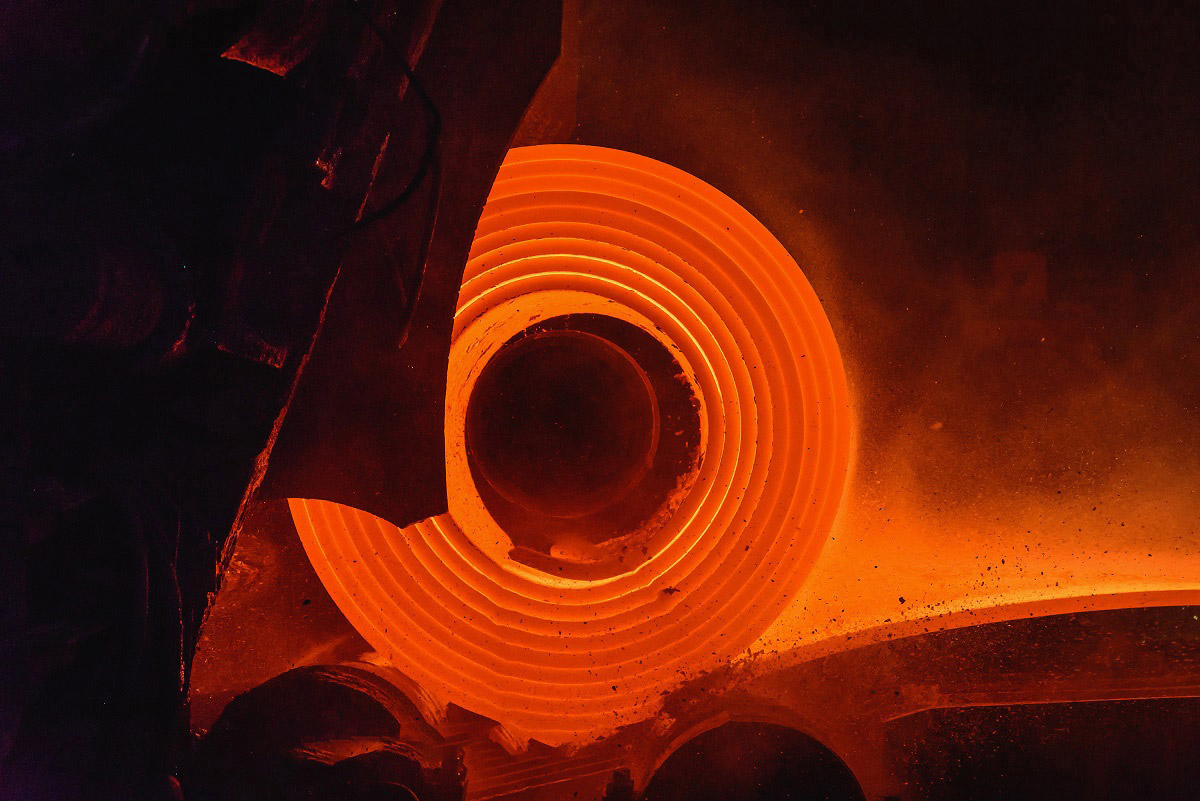
Let’s start by looking into hot-rolled steel. As the name suggests, hot-rolled steel is roll-pressed at extremely high temperatures (over 1,700 degrees Fahrenheit). This temperature is past the point of recrystallization. Heating the steel to this temperature makes it significantly easier to form and work with.
To start the hot-rolled steel process, manufacturers begin with a millet or a large rectangular piece of metal. As soon as the billet is properly heated, it travels to the pre-processing stage, where a large roll flattens it and smooths it out.
The steel will continue to stay at this high temperature while a variety of different rollers work to form the piece into the proper dimensions. All of this is happening at high speeds as the steel strands are quickly pushed through the rollers.
Specific movements depend on the product that is being manufactured. If sheet metal is being created, the rolled steel is spun into coils and left to cool. In the case that other forms such as plates or bars are being manufactured, the materials are broken into sections and packaged individually.
During the hot-rolled steel process, the material will begin to shrink as it cools in temperature. As we previously mentioned, hot-rolled steel needs to be formed while it is at a high temperature. This means that the cooling process occurs after the piece is already shaped into its final form.
This means that hot-rolled steel isn’t the ideal method for making items that require high-precision applications. Instead, hot-rolled steel is typically used for construction projects or larger items such as railroad tracks.
To determine whether or not hot-rolled steel is present, look for the following characteristics:
- The metal will have a scaly, bumpy surface that is a result of the steel cooling off from such extreme heat.
- In bar and plate products, the edges or corners of the metal may be slightly rounded because of metal shrinkage and finishing that isn’t as precise.
- Minor distortions from often cooling in the shape of a trapezoid instead of a squared-off edge.
Major Benefits of Hot-Rolled Steel
One benefit of hot-rolled steel includes how cost-efficient it is to produce. This is due to how much less processing it requires compared to cold-rolled steel. This type of metal can be cooled at room temperature without damage, meaning it won’t have a lot of internal stress that results from other work-hardening processes.
Hot-rolled steel is also beneficial to use where dimensional inconsistencies aren’t a major concern. For example, it’s easy to use a grinder, sandblaster, or acid-bath pickling to remove any surface imperfections on hot-rolled steel products. As soon as any imperfections are removed, a variety of finishes can be placed on top of the steel.
What Is Cold-Rolled Steel?
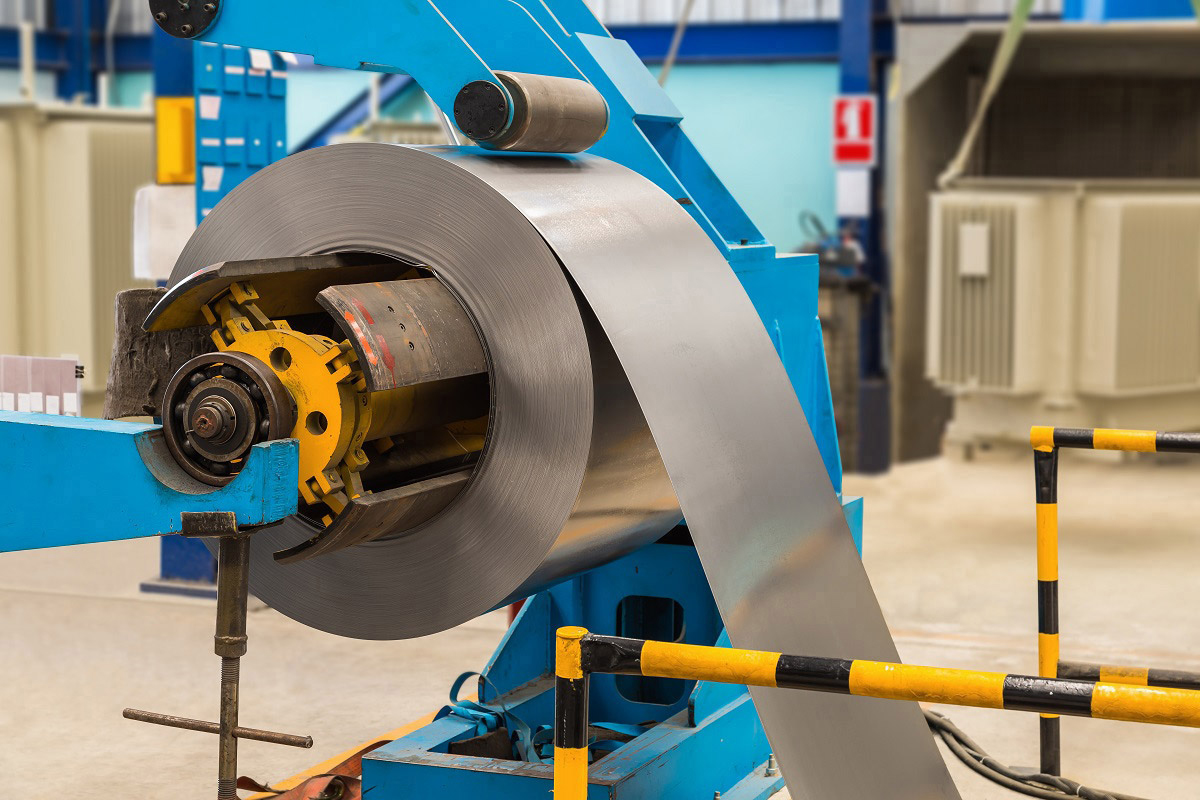
Unlike hot-rolled steel, cold-rolled steel is below its recrystallization temperature when it is formed. This means the steel won’t be as formable, requiring stronger mills to produce accurate cuts. As a result, the final shape of the product won’t change as much as it would in hot-rolled steel applications.
You can think of cold-rolled steel as hot-rolled steel that requires further processing. Many times, the term “rolled” refers to a variety of finishing processes. Other examples of processes that use cold finishing include polishing, turning, or grinding, all of which can be applied to make changes to hot-rolled stock products.
Here are some common characteristics of cold-rolled steel:
- Surfaces are cleaner and more even
- Finishes are oily to the touch
- Corners and edges are squared off and well-defined
- Concentric uniformity and straightness in tubes
Major Benefits of Cold-Rolled Steel
One of the main benefits that cold-rolled steel offers over hot-rolled steel is how accurate and clean its finishes are. This makes it ideal to use in technically precise applications where aesthetics are important. However, cold-rolled steel goes through additional processing that makes it more expensive.
Products made from cold-rolled steel are stronger and harder than other steels due to their shaping happening at a lower temperature. This helps the steel’s hardness and resistance against deformities increase.
One potential downside of this treatment is the fact that unexpected warping may occur as a result of internal stress that takes place within the material.
Which Type of Rolled Steel Should I Use for Welding?
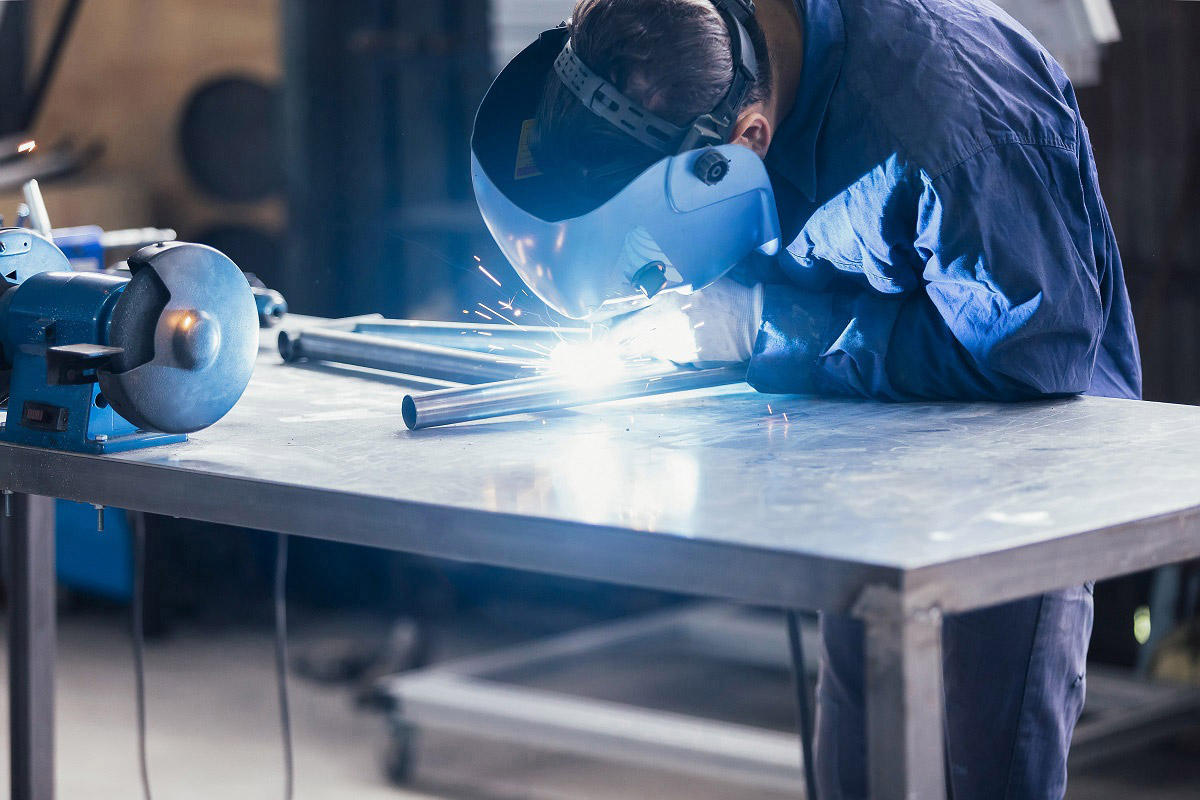
Hot-rolled vs. cold-rolled steel for welding is a common question that our team receives. The answer to this question depends on the type of equipment you need. If you need to produce large structural components, you’ll likely require hot-rolled steel for this type of project.
If your project requires small, intricate parts that are detail-oriented, it’s recommended you use cold-rolled steel when manufacturing. Any good fabricator will leave this choice up to you, providing you with the tools and equipment necessary to perform each task at hand.
Conclusion
At Schaumburg Specialties, our experienced team can provide you with the proper tools to complete both hot-rolled and cold-rolled projects with ease. We’ll work with you to understand your needs and execute them in a timely, accurate fashion. We build products to last a lifetime!
To get in touch to see how we can assist your upcoming project, please reach out to us at 855-712-9299 today.